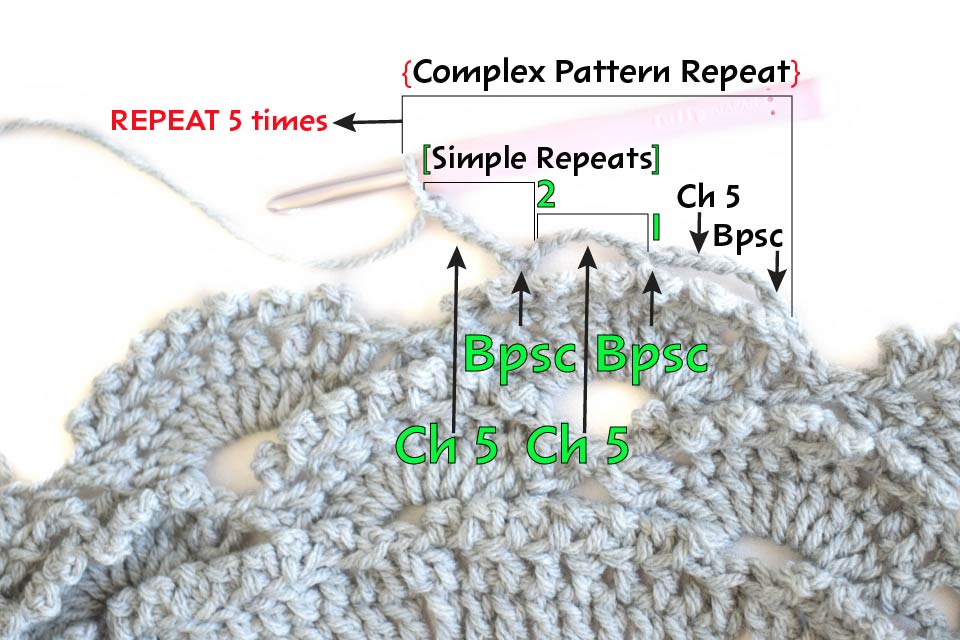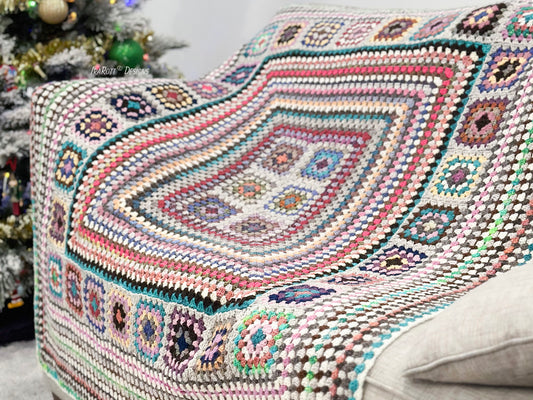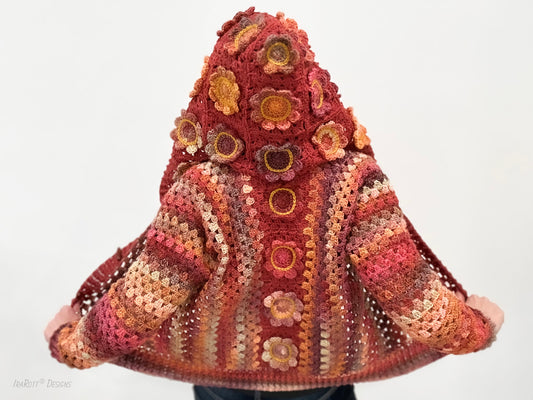If you are having trouble understanding crochet patterns, this article will provide answers to your questions and explain the meanings behind common marks and punctuations used for abbreviating repeats in the patterns.
Each IraRott® pattern begins with a list of materials and abbreviations used in the pattern, followed by special stitches and techniques that are usually explained after the abbreviations. Beside stitch abbreviations, you will notice special marks like (Parentheses), [Brackets], {Braces}, *Asterisks, and Equal = Sign. These marks indicate sequence repeats, stitch groups, and total stitch counts. Let's explore them all.
1. ( PARENTHESES )
In IraRott® patterns we use (Parentheses) in explanations or to indicate a group of stitches.
EXAMPLE 1 – Row 3: Ch 1 (does not count as a st now & throughout)…
The explanations written within parentheses clarify that the beginning Ch-1 is not included in your total stitch count of Row 3 and every following row that begins with Ch-1.
EXAMPLE 2 – (Dc, ch 5, dc) in stitch between large shells
In this example, the group of stitches written within parentheses needs to be worked into the same stitch as follows - Dc in stitch between large shells, ch 5, dc in same stitch between large shells.

2. [BRACKETS]
In IraRott® patterns we use [Brackets] for indicating simple pattern repeats.
EXAMPLE – [sc in next st, 2 sc in next st] 2 times
This means – you need to repeat 2 times the combination of stitches written within brackets as follows:
- Step 1 – Sc in next st, 2 sc in next st
- Step 2 – Repeat Step 1
3. {BRACES} & *ASTERISKS
When it comes to complex repeats in crochet patterns, you will find additional marks, such as {Braces} or *Asterisks, that are used along with the [Brackets].
A complex repeat is a pattern sequence that includes one or more simple repeats (marked green) within each complex repeat (marked red). You already know how to follow simple repeats, so let’s analyze this complex repeat, written in 2 different ways.
EXAMPLE 1 / Using {Braces} – {Bpsc around second dc of next shell, ch 5; [skip 2 dc, bpsc around next dc, ch 5] 2 times} 5 times
In this example the complex repeat is indicated by {Braces}, which means you need to repeat 5 times the combination of stitches written within braces as follows:
- Step 1 – Bpsc around second dc of next shell, ch 5; [skip 2 dc, bpsc around next dc, ch 5] 2 times
- Step 2 – {…} 5 times means: Repeat Step 1 another 4 times (total of 5 repeats)
EXAMPLE 2 / Using *Asterisks – *Bpsc around second dc of next shell, ch 5; [skip 2 dc, bpsc around next dc, ch 5] 2 times **; repeat 4 more times from * to **
This can also be written as – *Bpsc around second dc of next shell, ch 5; [skip 2 dc, bpsc around next dc, ch 5] 2 times; repeat 4 more times from*
In this example the complex repeat is indicated by *Asterisks, which means you need to repeat the combination of stitches written within asterisks as follows:
- Step 1 – Bpsc around second dc of next shell, ch 5; [skip 2 dc, bpsc around next dc, ch 5] 2 times
- Step 2 – repeat 4 more times from* (or from * to **) means: Repeat Step 1 another 4 times

For those struggling with visualizing intricate patterns, consider these helpful tips:
- If you print patterns, you can use markers for highlighting repeats.
- If you prefer reading patterns electronically, you can download the KnitCompanion app to be able to mark up your pattern with different colors to highlight complex repeats, and make your own notes as you go.
- You can also break down the pattern in smaller steps by writing each step on a piece of paper.
- Use stitch markers as you go to mark each complex repeat.
4. EQUAL = SIGN
Finally, in IraRott® patterns we use Equal = Sign for indicating the total stitch count at end of the rows and rounds.
EXAMPLE – Row 2: Sc in each st across = 25 sts
This means – After finishing Row 2, your total stitch count will be 25.





